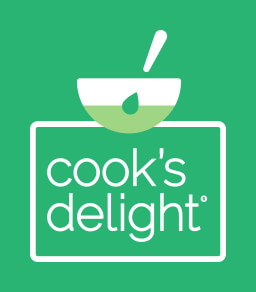Top 10 Trends in Food Development 2017
Strong Focus on Developing Foods that are Healthful, Natural and Nutritional
by Food Technology magazine Contributing Editor, A. Elizabeth Sloan
(reprinted in part with permission)
A dramatic shift in food preparation practices, a Millennial baby boom, and a strong focus on healthful, natural, and nutritional offerings are resetting priorities for food and beverage marketers. The food industry remains driven by convenience, with the following top ten food trends for 2017 dominating the market.
- Prep-It: Semi-prepared foods now dominate home dinner preparation. In 2016, 53 percent of shoppers used some partially prepared items versus 35 percent who cooked mostly from scratch (FMI 2016). Nearly half of shoppers buy heat-and-eat meat/poultry at least once a week; 40 percent buy precooked, ready-to-eat products (FMI 2017).
- Lifestyle Foods: Americans eat alone on 46 percent of all eating occasions. On average, 53 percent of the population eats breakfast alone; 45 percent dine alone at lunch; and 24 percent do so at dinner. 28 percent of U.S. households now comprised of adults living alone has caused an increase in demand for single serve packaging and individually portioned multi-packs (Hartman 2016).
- Kid-Specific:As millennials continue to drive a new baby boom, products for babies, toddlers, and kids will be in high demand. In 2015, 4 million babies were born in the United States. Moreover, with growth in the female population concentrated between the ages of 24–39 from 2015–2020, the number of children aged 1–3 is projected to grow by 6.7 percent (CDC 2016, Goldman Sachs 2016).
- New Nationalism: Consumers have expressed a newfound pride in all things American, which has increased opportunities for American regional cuisines, ingredients and comfort foods. More than one-third of specialty food shoppers bought gourmet regional American foods/ingredients last year (SFA 2016). Southern/U.S. regional cuisine ranks fourth, following Mexican, Italian, and Chinese, as the most sought-after among supermarket shoppers, with slightly higher appeal to men versus women (FMI 2015).
- Nutritionals: Demand for a simpler way to live a healthy lifestyle continues to grow, and highly fortified nutritionals are getting the nod. Nearly two-thirds of adults tried to get more protein in 2016; 60 percent tried for more fiber; 59 percent, whole grains; 56 percent, vitamins/minerals; 48 percent, potassium; 37 percent, omega-3s; and 33 percent, probiotics (IFIC 2016). For the first time, nutritional/supplement drinks, bars, and meal replacements were among the top 10 fastest-growing food/beverage categories in the United States, up 9.8 percent for 2016 (Nielsen 2016).
- Dinner Redesigned:A typical home dinner for 86 percent of shoppers includes a main dish; for 61 percent, it includes a vegetable; for 48 percent, a salad; and for 44 percent, a dessert (Acosta 2016). Meat and poultry are making a steady return to the center of the plate, likely due to lower prices. In 2017, 3.8 meals per week on average contain meat or poultry—the highest proportion in five years. Three-quarters eat meat/poultry at dinnertime at least three days a week; 20 percent do so six days per week (FMI 2017).
- Ag Alternatives: Americans continue to experiment with plant-based meals, eating regimens, and meat/dairy alternatives. One in five are regularly eating more meatless meals/meat alternatives; 47 percent do so occasionally (FMI 2017). Five percent of grocery shoppers were on a vegetarian diet last year, 2 percent were on a vegan diet and 2 percent were avoiding dairy (FMI 2016). Four in 10 chefs still cite vegetarian and vegan cuisines as hot culinary trends for 2017; protein-rich grains/seeds ranked as the 17th overall most important trend (NRA 2016).
- Upgrading to Premium:Millennials aged 25–44—the heaviest users of gourmet products—are driving demand for more specialty products across nontraditional channels. In 2016, for the first time, men were more likely to buy specialty foods than women. Nearly half of parents’ food dollars went for gourmet fare (SFA 2016).
- Claim It: Savvy marketers are turning to package claims/copy to convey their benefits more quickly to consumers. With food marketers fixated on clean label, free-from, and natural, flavor claims appear to be getting short shrift. Over the past five years, the top 20 claims on frozen pizza did not include a flavor cue (Mintel 2016). With half of adults citing under 30 minutes as the ideal amount of time for food preparation, quick and easy claims remain a critical purchase consideration (Hartman 2015).
- Natural Living: The desire to live a more natural, chemical free, sustainable-focused life is accelerating among consumers. Twenty-eight percent of grocery retailers predict natural/organic groceries will grow in 2017 (Springer 2017). Foods/beverages with an organic claim posted a compound annual growth rate of 14.8 percent over the past four years; for GM-free, the growth rate was 12.5 percent; gluten-free, 11.2 percent; and natural, 11.1 percent for 2016 (Nielsen 2017). More than half of consumers feel that foods with a natural claim taste better; 40 percent think that is true for organic foods; and 30 percent believe it to be true of GM-free foods (Technomic 2016).
